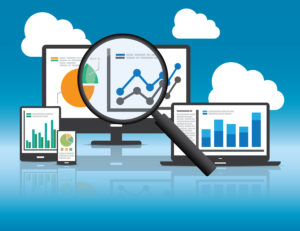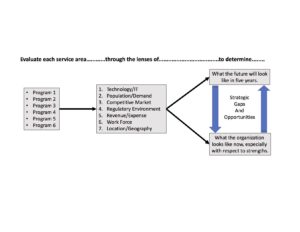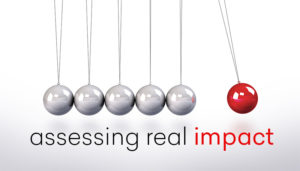
If you think you have a pretty good handle on what the future environment will look like, or at least you are knowledgeable about the trends that will affect your organization going forward, and you have a solid and honest assessment of how well you are operating in your current environment, then you are ready to define your future. Before suggesting how you can frame that future in words, however, I want to pause and reflect a bit on the expression I use a lot in my practice, and frankly, what I believe is the only appropriate outcome of strategic planning: a description of your “preferred future.”
The truth is, there are many futures one can choose from. There is a large set of possible futures, limited only by your vision and capacity to achieve them. If you analyze the world you operate in and are attuned to changes that are happening and are likely to happen in the future, you might come up with a few plausible futures that are within the realm of possibility given your organization’s recognized strengths and constraints. There is also a probable future if you continue to operate with minimal changes in mission or program. Understanding what that probable future looks like can serve as a baseline from which to measure risk or change. Choosing from among the large set of possible futures, however, leaders who are determined to position their organizations for maximum impact and sustainability in the future must describe the preferred future they can commit to striving for. The illustration below describes how these possible futures are related. I’d like to share a few observations on each of these so you can gain a better sense of what I am encouraging you to do. There is also an inherent flaw in the model itself which I will expose and discuss at the conclusion of the article.
Possible Future
So, what’s possible? Just about anything, I suppose. For example, if you receive an unexpected ten million dollar legacy gift, or Democrats come into power again and triple federal spending on Medicare and Medicaid, you can dream pretty big dreams. It’s possible that advances in technology will eliminate the need for direct care staff, that all your surrounding competition will turn their assets over to you, and that the state in which you operate will ask you to take over all state-run agencies of your type. The key consideration is what is in your control to change. You can’t predict when people will die and leave you millions and the political future is less predictable than the weather. And far-fetched fantasies, while tantalizing, need to fly on their own and not crash into the corn field of reality.
Trying to describe various possible futures consists of a 30,000 foot view of what the organization could look like, realizing that as one gets closer to the ground with all its detail and variation, many if not most of those possible futures are not realistic.
Plausible Future
So Uncle Fred isn’t going to leave your organization the farm, the Republicans will control the federal government for the next eight years, you’ll still need a significant entry-level workforce, and the competition will still wrestle with you for market share. Given the internal and external conditions in which you operate, what reasonable predictions can be made about the future and how will your organization fit into it? From the days when I taught logic, I emphasized that a good informal argument should pass the tests of coherence and correspondence. Achieving plausibility is similar. A plausible future is one which must be internally coherent and consistent with current and projected realities and must correspond with how the majority of others in your industry view the future. In other words, a plausible vision of the future has to make sense, given everything else which is known.
Probable Future
Probability is a mathematical concept which determines the likelihood of an occurrence. If you flip a coin into the air, the odds of it turning up heads is one out of two possibilities. To be sure, it is possible that you could throw five heads in a row, but we know that the more instances of flipping a coin there are, the closer to that 50% mark we come. In the world of organizational planning, we can also surmise the future based on daily, weekly, monthly and annual instances from the past, usually described quantitatively in terms of key performance indicators, benchmarks, financial performance, quality measures and whatever other ways exist to track your organization’s behavior over time. Visually, one can draw such performance in the form of a graph which indicates behavior and change over time. Extrapolating those graphs into the future, including rate of change, arc and trajectory, one can ascertain a probable state of existence at a future point in time. This, of course, assumes that existing internal and external conditions remain pretty much the same – a very dangerous assumption which I will discuss below.
So, thinking about your organization as it is today, factoring in what you know about the environment and how it is changing, you can project a vision of the future derived from where all those performance lines lead, assuming you continue to do what you have always done with the same people in the same manner in the same location using the same methods. Well, who wants to do that? If your strategic plan is to do the same old same old, then I’d suggest that you don’t even bother with the effort. Just draw the lines five years into the future and be done with it.
But of course, that isn’t why your board pays you the big bucks, is it? While it may be a useful exercise to contemplate what your organization would look like if you did nothing, or to calculate what it would take to “bend the curve” of your performance measures, merely creating a future based on current trend lines seems like an abrogation of responsibility to me.
Wild Cards
Of course, the future is not perfectly predictable. If it was, I would not be writing this; I’d be enjoying the beaches of Maui, living on my shrewd investments in the stock market. In my own professional life, I was the architect of a brilliantly conceived strategic plan for my organization that rigorously analyzed everything I’ve talked about here. This beautifully constructed vision for the future of my agency was enthusiastically adopted by my board in February of 2008. The following September it went into the ash heap of history as a useless stack of paper. The wild card we were dealt was called a financial recession and it dramatically reshaped our future as we worked to survive. While unpredictable, possible wild card events should be considered and risk mitigation strategies developed. Decision-making tools to handle unanticipated events should be established. Unfortunately, we had planned on the basis of static assumptions and were not prepared for the big recession wild card. The chart indicates their possibility, not their probability. Acknowledge them, but work to avoid them.
And so we come to the decision point. Given everything you know about what is possible, plausible and probable, what do you prefer to have your future look like? This is a complex question, but one which can be answered in its constituent parts. If you return to the seven planning variables I described in my two previous articles, it is possible to describe a preferred position in each of those areas. Taken together, they comprise the organization’s vision for the future.
Your preferred future should be written in the form of high level general statements of position. I prefer this terminology to “goals” or “objectives” or “initiatives,” which have their own technical meanings and imply associated measurable targets and timelines. These types of statement will follow later as the leadership team develops annual tactical and action plans. For purposes of the strategic plan, however, boards should only focus on the high level strategic positions and not be allowed to get into the weeds around tactical issues.
Allow me to give a few examples of what such high-level position statements might look like for each respective planning element. I don’t hold them up as perfectly constructed models; only as examples to give you the general flavor.
Technology – In five years, the organization will be regionally recognized as the frontline innovator in the use of adaptive and educational technology to support people with intellectual and developmental disabilities.
Population/Demand – The organization will provide a comprehensive continuum of care to seniors beginning with early retirement and continuing to end of life with a dominant desire to meet their needs at every phase of life in their own homes.
Competitive Market – The organization will be the exemplar of excellence in its region and will strive to expand its mission of quality through affiliation, collaboration or merger with identified competitors in the region.
Regulatory Environment– The organization will aggressively advocate at every level of government to ensure the highest level of funding, client civil rights, and legal protection for the people it supports.
Financial Position – The organization will ensure its long-term sustainability by maximizing its operating revenues through advocacy efforts and by building an endowment through aggressive fund raising from individual, corporate and foundation donors which will be of sufficient size to offset all corporate overhead expense from its earnings.
Work Force – The organization will be recognized in its region as the employer of choice, characterized by high employee satisfaction, lower than average turnover, and opportunities for all employees to grow and advance personally and professionally.
Location – The organization will expand its geographic service area from broadly regional to selectively national in scope, targeting those states and population centers which demonstrate sufficient unmet need for services, a favorable regulatory and funding environment, and adequate denominational representation to provide spiritual support.
If thoughtfully constructed and clearly reflective of solid research in each area, I think you can see how powerful such statements are for boards and leadership teams as they exercise their strategic responsibilities. Any one of these statements could yield hours of generative discussion in a board meeting. Such position statements, taken together, should paint a clear picture of what the chosen future will look like.
These statements should also be descriptive enough to then be broken down into tactical goals and objectives, complete with measurable indicators of progress. As stated before, however, tactical statements should NOT be under the purview of boards or board committees. They can be reviewed as annual initiatives or goals, but a board’s responsibility is to approve the long-range strategic direction of the organization and not to tell management how to execute the plan.
To return to the earlier concern about unanticipated “wild card” events that have the potential to dramatically alter the future, I will write in more detail in subsequent articles about how to manage such events within the framework of the long-range strategic plan. However, it is important to state that once a strategic plan is adopted, it should NEVER be allowed to languish on the CEOs bookshelf. It MUST become a living document, subject to review and revision whenever changes in the internal and external environments warrant. While I’ll expand on this more at a future date, let me suggest some simple ways to immediately create a culture around the strategic plan.
Probably the biggest step toward ongoing review and accountability is to make the strategic plan THE agenda for board meetings. Devote most of board meeting time to discussing progress toward achieving those position statements. Report on key performance indicators which show progress toward the end goals. Use the position statements for generative discussions, bringing in key staff to provide background information and to report on initiatives aimed an advancing the organization toward the preferred position. You might think about publishing management briefs between board meetings so the board meeting doesn’t digress into listening to reports. You can actually dump most board decisions or approvals into a consent agenda that would require no discussion unless someone moved to take an item off the consent agenda. In other words, embed the strategic plan into governance practice.
The second biggest step toward ongoing review and accountability is to make the review and updating of the strategic plan an annual event, scheduled for a vote by the board at the same time every year. In other words, I recommend having a rolling one-year strategic plan with a three to five year horizon. Each year, the plan is updated and another year is added to the horizon. If this is done thoroughly each year, it is conceivable that a comprehensive six to twelve month comprehensive strategic planning process would never be needed again.
Finally, to deal with those unanticipated wild card events, tools need to be developed which allow the organization’s board and management to make crisis decisions in a manner which stays true to the strategic direction of the organization. I’ll talk more about how that can be accomplished in three weeks.
As always, your thoughts and reactions are welcome.














